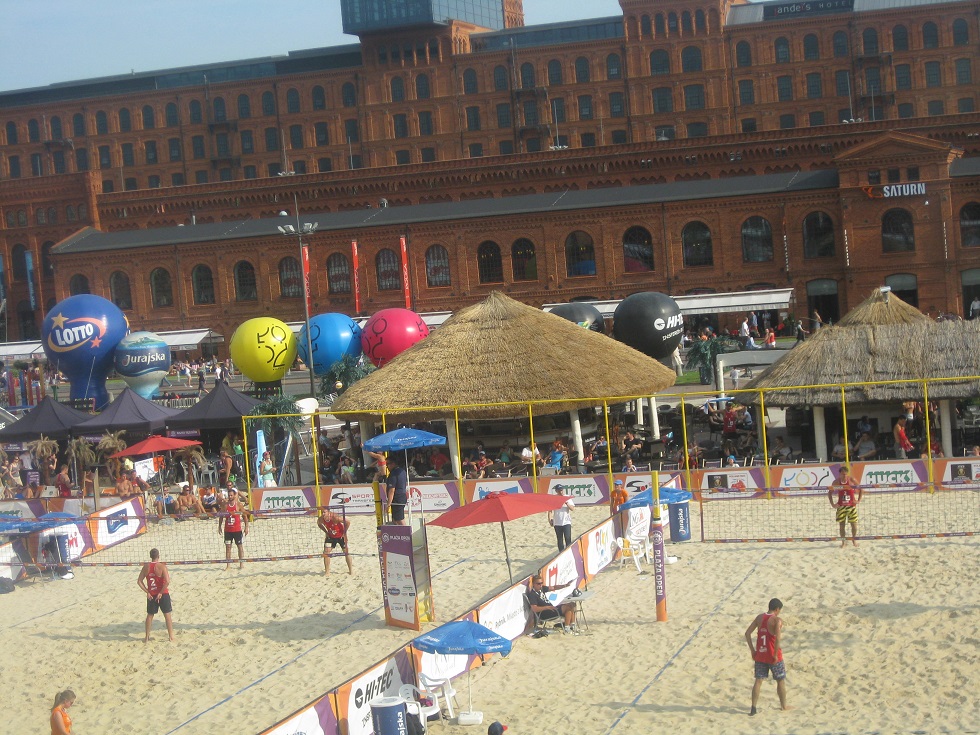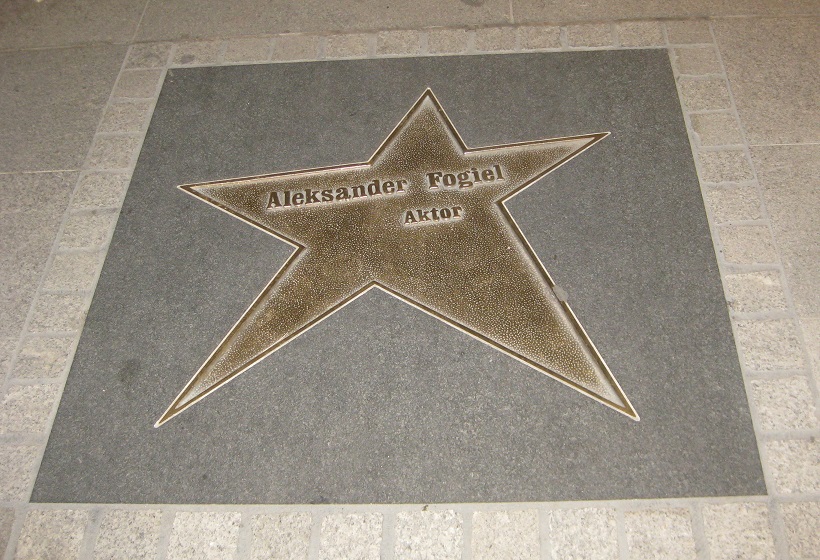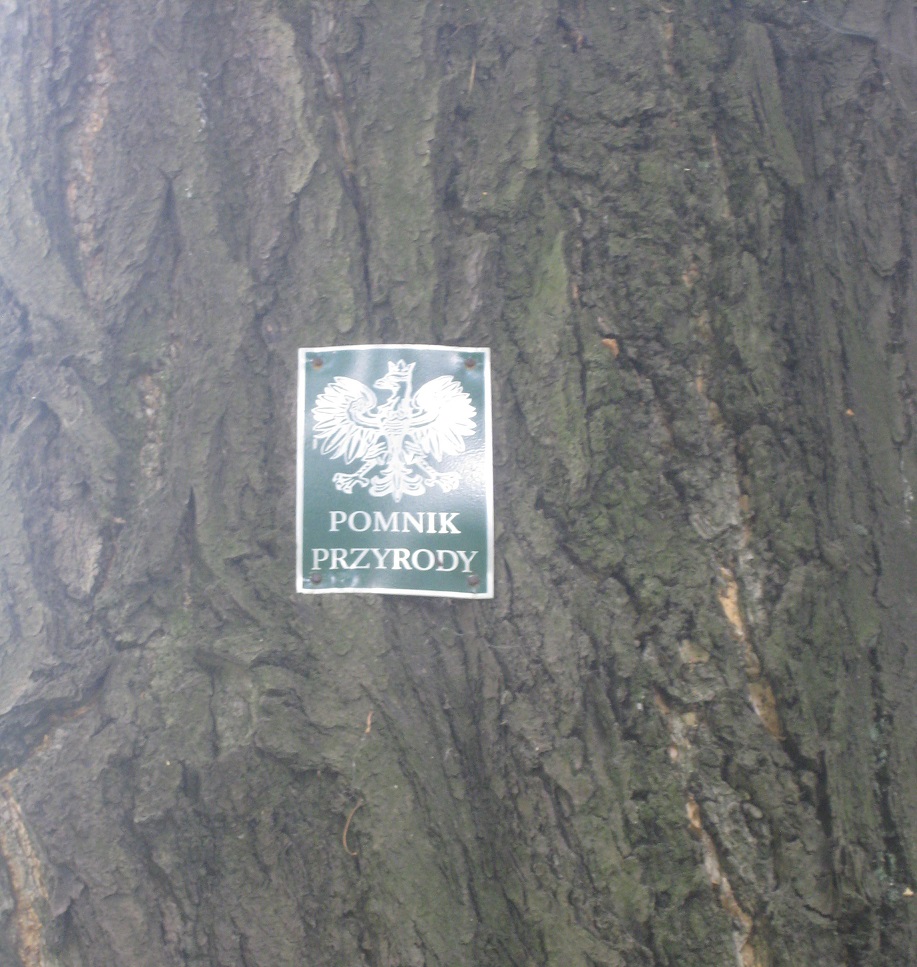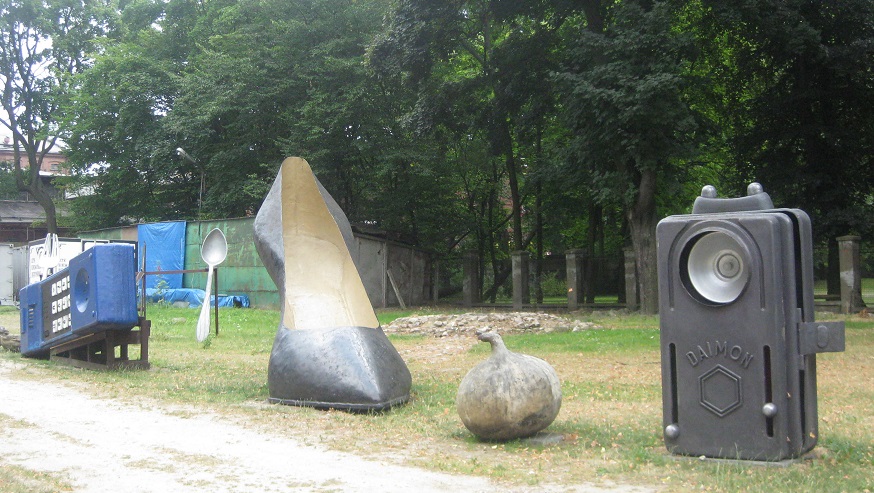We spent two and a half days in Łódź*. *pronounced Wuh-dge
- Rynek (Market) Górniak: This market is held inside and around a big metallic dome. It’s a bit of a flea market, mixed with a green market, with lots of random shops thrown in (‘Why hello Mr. Butcher, next door to bins of bargain basement bras’). It was advertised as a place with inexpensive, brand name clothing, so I dragged B there in the quest for a dress. Yes, I set out on a yearlong trip with nothing nice to wear. And there were indeed some dresses, quite appropriate for the 50-something crowd – though my mother would never be caught dead in anything like it. We also had some language adventures here, detailed elsewhere.
- Museum of the Factory: This is the museum documenting the woolen mill that made this town famous. It was one of those complexes that was like a village onto itself inside a city. It was founded in the 1800s by a Jewish merchant, who gave back to the community (even funding the building of a church!) and developed quite an enterprise. After his death, currency issues and/or mismanagement reduced the size of the factory. It was subsequently taken over by the Germans in both World Wars. I can only imagine what would have been the founder’s horror at finding something he worked so hard to build being used to furnish the needs of those who murdered his descendants. The museum itself was fairly small, and focused more on the 20th century attempts at revitalization, including a mill library, traveling dance company (to advertise the colorful fabrics), and sports complex. If it had been more than $2 or out-of-the-way, I likely would have been annoyed, but as it was, it was a fine break from the heat. (This is not to suggest that they have air conditioning. We have, to date, seen exactly one place with any climate control to speak of.)
- Manufaktura: When they finally gave up on revitalizing the big factory, they converted it into a mall. There’s still a museum honoring the factory, but there are also a climbing wall, a bowling alley, an arcade, a big food court, a range of trendy stores, a merry-go-round
 , a movie theatre, a parking lot, a fountain, and room for events. While we were there, they were hosting an outdoor beach volleyball tournament, decked out with resort-style tiki bars serving electric blue drinks. We passed on the drinks, but the volleyball was pretty good. At ‘halftime,’ they did one of those spin-around-on-a-baseball-bat-and-then-try-to-run-cross-court competitions, which was very helpful in my efforts to learn to count in Polish.
, a movie theatre, a parking lot, a fountain, and room for events. While we were there, they were hosting an outdoor beach volleyball tournament, decked out with resort-style tiki bars serving electric blue drinks. We passed on the drinks, but the volleyball was pretty good. At ‘halftime,’ they did one of those spin-around-on-a-baseball-bat-and-then-try-to-run-cross-court competitions, which was very helpful in my efforts to learn to count in Polish. - Piotrkowska Street: This is the main drag of the town, similar to Las Ramblas in Barcelona. It’s a fun street, featuring a walk of fame (below), lots of cool street art, and a million restaurants. They even have an Off-Piotrkowska area, which is a bit like Off-the-Grid in San Francisco, with food trucks and chairs [Yes, mom, this is the place you said was colder in August than anywhere in Wisconsin all year around]. Along the way, on each side, there are archways that reveal courtyards. Some are simply the interior of apartment complexes, but others reveal little parks or ivy-covered shops or cute cafes. If you go to this street, and all you experience is uprooted tram lines and an eerie silence, you haven’t walked far enough north.
- Walk of Fame: Łódź is considered a revitalized city, known as Poland’s Hollywood.
 The label has to do with the preponderance of street art, the Cinema Museum, and this homage to the Chinese Theatre on Piotrkowska Street. In one area, there are bricks down the center of the road featuring Polish artists’ names. In another, there are sidewalk stars, with more famous actors’ names in large print. The design of this attraction suggests that Łódź city planners either visited LA in the early days or purposely created a small-town version. It’s cuter, but it’s also devoid of the star wattage that makes people trek to Hollywood. Put another way, it lacks the teeming crowds of LA: if we hadn’t been seeking it, I doubt we would have noticed it.
The label has to do with the preponderance of street art, the Cinema Museum, and this homage to the Chinese Theatre on Piotrkowska Street. In one area, there are bricks down the center of the road featuring Polish artists’ names. In another, there are sidewalk stars, with more famous actors’ names in large print. The design of this attraction suggests that Łódź city planners either visited LA in the early days or purposely created a small-town version. It’s cuter, but it’s also devoid of the star wattage that makes people trek to Hollywood. Put another way, it lacks the teeming crowds of LA: if we hadn’t been seeking it, I doubt we would have noticed it. - Park Źródliska: This is supposed to be the fifth most beautiful city park in Europe, but we were stumped as to why.
 Now, granted, we most walked through Źródliska II and not I (why you would name parks like you would kings is lost on me), so perhaps this explains it. It was a small park, walled off from the surrounding area like a gated community. Inside were a few teens sitting on a bench, some workers cutting the grass, an old pavilion, some cement ruins, and some trees labeled with a message that I like to interpret as ‘monument to nature.’
Now, granted, we most walked through Źródliska II and not I (why you would name parks like you would kings is lost on me), so perhaps this explains it. It was a small park, walled off from the surrounding area like a gated community. Inside were a few teens sitting on a bench, some workers cutting the grass, an old pavilion, some cement ruins, and some trees labeled with a message that I like to interpret as ‘monument to nature.’  At the front, there was a cinema museum, whose ‘back yard’ featured life-sized replicas of mundane objects. I didn’t climb inside the shoe, despite my inclination to do so, because of a man with a disapproving scowl in the museum’s second story window. Mission accomplished, sir.
At the front, there was a cinema museum, whose ‘back yard’ featured life-sized replicas of mundane objects. I didn’t climb inside the shoe, despite my inclination to do so, because of a man with a disapproving scowl in the museum’s second story window. Mission accomplished, sir. - Park Staromiejski: This is like a large, green square, with a big fountain in the middle and benches all around. It also has a sundial sculpture and an area with noise-making metal sculptures for kids (and adults) to play on.
What We Missed:
- Jewish cemetery: Reputed to be the largest Jewish cemetery in Europe, located in the second largest ghetto in Poland. This ghetto was so productive that the Germans benefited from it until the very end, when it was clear that the Russians were advancing. Then, they sent the thousands of Jews living there to their deaths in extermination camps. Only 800 people remained, and their job was to clean up the ghetto. They were forced to dig mass graves, intended for their elimination, as part of the clean-up. In the only good news is this awful story, “the speed of the Soviet advance took the Nazis by surprise and those destined to die after the clean-up survived. The intended graves have been left [in the cemetery] as a chilling reminder of this tragic period in history.” We missed this, unfortunately, because we didn’t plan ahead, and the cemetery is closed on Saturdays.
- Museum of the Traditions of Independence: A former prison, and this town/country is already sad enough.
- Museum of the City of Łódź: We tried to go here, but they had rented out the garden for a wedding. There were no signs, so it wasn’t until a fancy, old-fashioned car with a bride inside was almost upon us that we realized we had better book it out of here.
- Museum of Łódź Sewage System: B was wearing flip flops, we had a large bag, and I know what sewage looks like. Pass.
- Fala Aquapark: This was a bit out of the way, and we’re hoping to go to the Sopot Aquapark next week.


